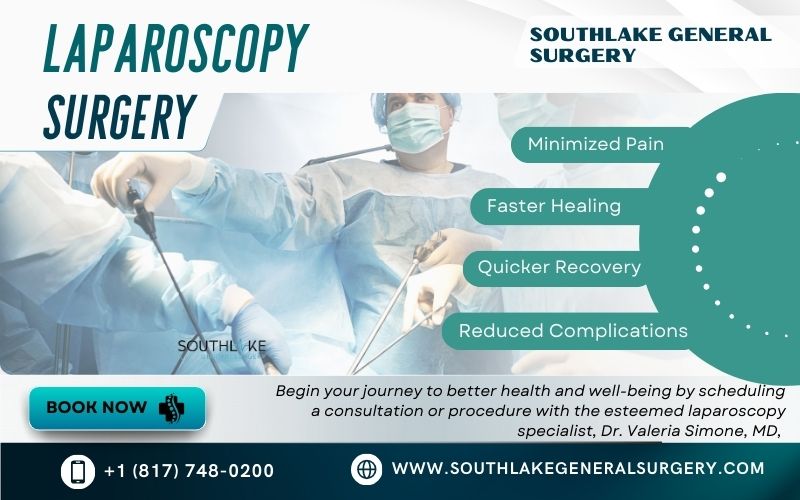Laparoscopy surgery is a minimally invasive procedure that offers a safer and more efficient alternative to traditional open surgery. Small incisions enable the insertion of a laparoscope and specialized instruments, reducing scarring, recovery time, and complications. Explore its benefits and recovery process in this informative article.
Key Highlights
- Laparoscopy surgery has many benefits. Usually, it reduces pain following the procedure and supports a quick recovery.
- Most patients require a day or two in the hospital after this procedure. This allows you to return to normal activities quickly.
- Taking care of yourself at home plays a crucial role in your recovery after surgery. This can help relieve any pain or discomfort, including shoulder pain.
- Patients need to be alert for complications such as infections, excessive scar tissue, and blood clots.
- Laparoscopy is a well-liked and risk-free option for several medical issues.
- Talk to your surgeon right after surgery. It improves the chances of a quick recovery and the best possible results.
Understanding Laparoscopy
The Basics of Laparoscopic Surgery
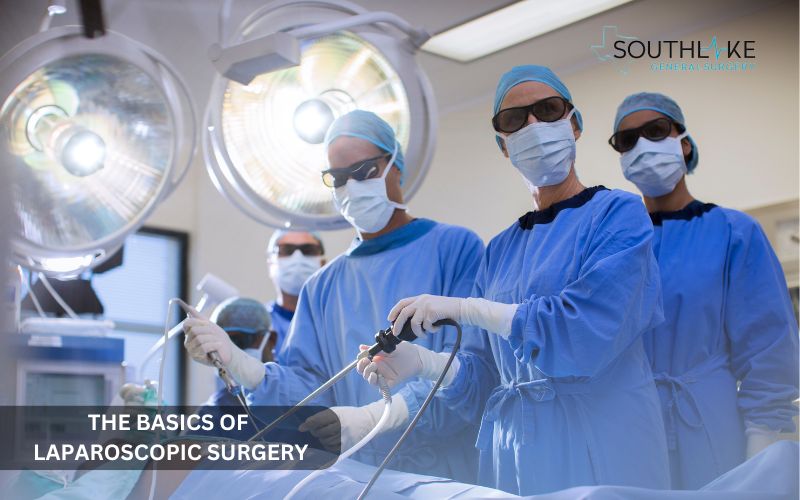
Laparoscopic surgery, often referred to as minimally invasive surgery, involves the use of a laparoscope, which is a thin, lighted tube equipped with a camera to help visualize internal organs.
A small incision is made near the belly button for insertion. This procedure allows surgeons to carry out a range of operations inside the abdominal cavity. To enhance visibility, they carefully introduce carbon dioxide gas into the abdomen.
Key Uses and Applications in Modern Medicine
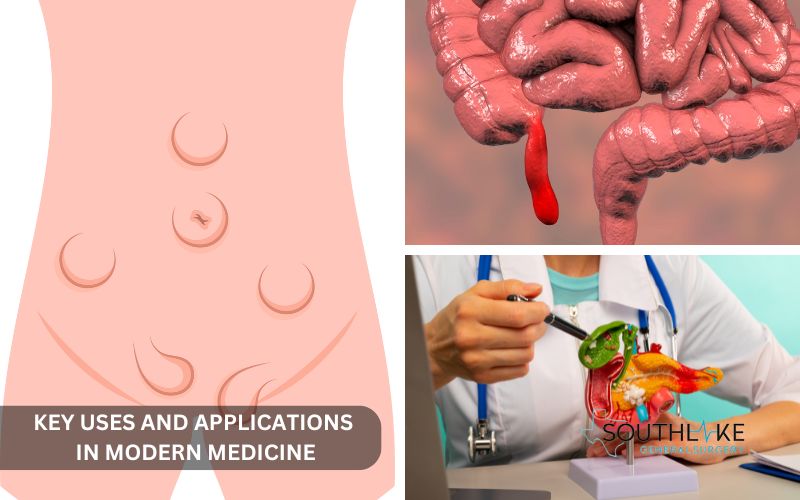
Laparoscopy is commonly used for:
- Appendectomies (appendix removal)
- Cholecystectomies (gallbladder removal)
- Hernia repairs
- Weight loss surgeries (e.g., gastric bypass)
- Diagnostic procedures (e.g., examining abdominal organs)
Additional applications of laparoscopy include:
- Adhesiolysis (removing adhesions)
- Cyst removal
- Liver biopsy
- Pancreatic surgery
- Urological procedures (e.g., kidney stone removal)
By offering a safe, effective, and minimally invasive solution to a wide range of surgical and diagnostic requirements, laparoscopy has proven to be an invaluable tool in contemporary medicine.
What is the difference between Laparoscopy & Laparoscopic Surgery
Laparoscopy and laparoscopic surgery are two related concepts that serve different purposes and have unique scopes.
Laparoscopy is a helpful technique for diagnosing internal issues, utilizing a laparoscope. Laparoscopic surgery, on the other hand, is a method that treats various conditions through minimally invasive procedures.
Laparoscopy: Diagnostic Insights
The non-invasive diagnostic procedure known as laparoscopy is utilized for:
- Visually examine abdominal organs
- Identify causes of pain or discomfort
- Conduct biopsies for tissue analysis
- Guide further treatment decisions
Laparoscopic Surgery: Therapeutic Interventions
Laparoscopic surgery involves various surgical procedures that utilize laparoscopic techniques to:
- Treat conditions like appendicitis or gallstones
- Repair hernias or damaged tissues
- Perform organ removals or reconstruction
- Ease symptoms and enhance overall well-being
Key Differentiators
- Purpose: Laparoscopy serves as a diagnostic tool, whereas laparoscopic surgery is aimed at providing therapeutic benefits.
- Scope: Laparoscopy visualizes internal organs, whereas laparoscopic surgery involves surgical interventions.
- Complexity: Laparoscopic surgery involves a high level of precision and skill from the surgeon.
- Outcomes: Laparoscopy helps in diagnosing conditions, whereas laparoscopic surgery offers a way to treat them.
- Recovery: Laparoscopy generally involves a shorter recovery period compared to traditional laparoscopic surgery.
Preparing for Your Laparoscopy or Laparoscopic Surgery
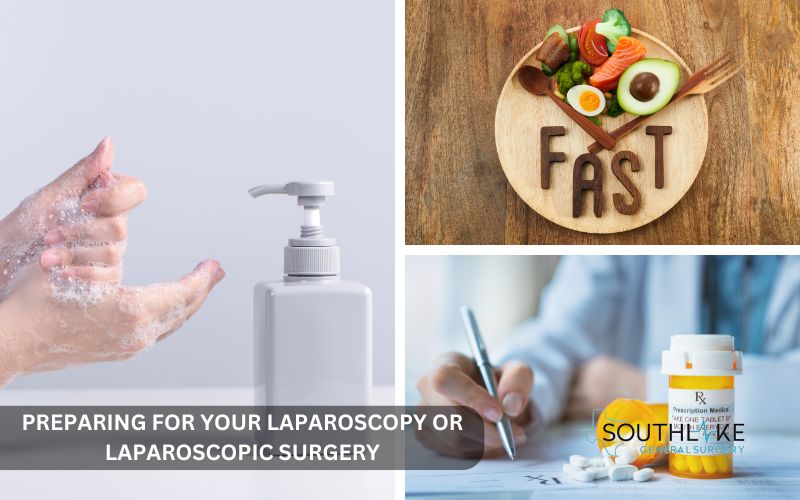
Steps to Take Before Your Surgery
Your surgeon will provide you with detailed instructions to follow prior to the procedure. This process will involve:
- Avoid eating for a short period of time prior to the surgery. By keeping your stomach empty, you can lessen the risks associated with anesthesia.
- It’s necessary to keep your doctor informed about all the medications you are currently taking. When it comes to blood thinners, your doctor may decide to lower the dosage or pause the medication for a while.
- Be sure that your healthcare providers are aware of any medical issues, including allergies, that you may have.
It’s a great idea to discuss the advantages and disadvantages of the anesthesia method with your doctor prior to your procedure. Feel free to ask any questions you may have at this point!
Prior to your consent, your doctor will go over everything with you and answer any questions you may have.
Preparing for Surgery: A Step-by-Step Checklist
The day of your laparoscopic surgery is here! Being well-prepared can help ease any worries and contribute to a smoother experience. Upon your arrival at the hospital, you’ll be greeted by the admissions staff who are there to assist you.
They will assist you with the registration process and help you finish any outstanding paperwork. Next, you’ll be guided to the pre-operative area, where you’ll have the opportunity to change into a hospital gown and meet your healthcare team.
Morning Preparation (1-2 hours before surgery):
- Fasting instructions: Avoid eating and drinking as your healthcare provider advises.
- Medication management: It’s mandatory to keep your healthcare team informed about any medications and supplements you are taking.
- Hygiene and grooming: Shower, remove jewelry, and avoid makeup.
Pre-Operative Preparation (30 minutes to 1 hour before surgery):
- Monitoring vital signs: Checking the patient’s pulse, temperature, blood pressure, and other vital signs.
- IV insertion: You will have an intravenous line placed in an arm vein. This will administer the general anesthesia along with other medications and fluids.
- Anesthesia consultation: Consult with the anesthesiologist regarding the available anesthesia options.
- Surgical team briefing: Discuss the specifics of the procedure with your surgeon.
Surgery and Recovery:
- Operation: Laparoscopic surgery is performed with the patient under anesthesia, ensuring a comfortable experience during the procedure.
- Recovery room: A special area focused on observing and providing care for patients following their surgical procedures. It’s significant to monitor and care for patients after surgery.
- Pain management: Medications can be effective in reducing discomfort and pain.
- Fluid and nutrition guidance: Your surgeon will provide you with helpful guidelines for your post-operative diet.
Post-Operative Care (1-2 hours after surgery):
- Monitoring: Your vital signs and overall health will be monitored with care and attention.
- Pain management: Your doctor may recommend making changes to your medication to help ease your pain effectively.
- Hydration: You are encouraged to increase your fluid intake.
- Mobility: After laparoscopic surgery, it is essential to gradually walk about and move around as part of your post-operative treatment. Prompt mobilization aids in avoiding problems, speed up the healing process, and shortens the duration of hospital stays.
Discharge Preparation (1-2 hours before discharge):
- Post-operative instructions: The patient will receive helpful information on recovery, self-care, and how to manage their wound effectively.
- Follow-up appointment: The patient will be provided with helpful information on how and when to schedule a follow-up appointment with their surgeon.
- Transportation arrangements: It’s important to arrange for safe transportation home following your surgery.
- Emergency contact information: Make sure your healthcare team’s contact information is available.
Additional Tips:
- Arrange for a companion: Have someone accompany you to the hospital.
- Plan for recovery time: Set up your house so that you can relax and recover.
- Follow instructions: Adhere to your healthcare team’s guidance.
Staying informed and prepared can really contribute to achieving a successful outcome. Your healthcare team is dedicated to offering outstanding support every step of the way.
The Benefits of Choosing Laparoscopy Procedure
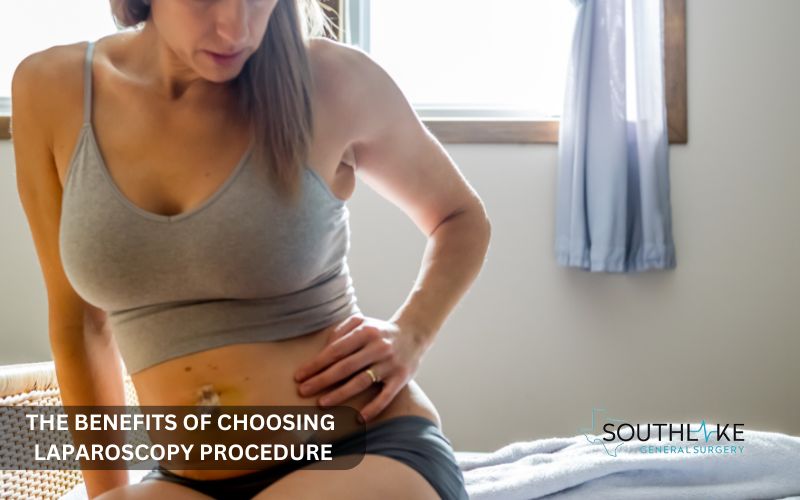
Laparoscopy surgery provides numerous advantages over open surgery, making it a popular choice for both patients and healthcare professionals.
Laparoscopy involves making small incisions and utilizing specialized instruments, which helps to minimize tissue trauma. This approach can lead to shorter recovery times and better overall outcomes.
Minimally Invasive Laparoscopy: Reduced Pain and Faster Recovery
Laparoscopy offers the advantage of being less invasive. It includes making small incisions, usually less than half an inch. This method is more considerate of the body in comparison to conventional open surgery.
Using smaller incisions can be beneficial as they help reduce pain both during the surgery and in the recovery period afterward. The result is a more relaxed atmosphere for the patients.
Key Benefits of Minimally Invasive Laparoscopy:
- Minimized Pain: Smaller incisions can help minimize discomfort both during and after surgery.
- Faster Healing: Minimizing tissue damage can help speed up the recovery process.
- Reduced Complications: There is a reduced chance of experiencing wound infections, hernias, and various other complications.
- Less Pain Medication: Using fewer painkillers can help reduce the chances of experiencing side effects.
- Quicker Recovery: Patients can get back to their usual activities in a shorter amount of time.
- Enhanced Patient Experience: Minimizing discomfort and stress contributes to a greater sense of well-being.
Shorter Hospital Stays and Quicker Recovery Times
When compared to conventional open surgery, laparoscopic procedures allow for quicker recovery and shorter hospital stays.
This method is designed to be minimally invasive, resulting in reduced tissue trauma. This leads to faster healing and reduced discomfort for patients.
Hospital Stay and Recovery Benefits:
- Hospital stay: A hospital stay typically lasts 1-2 days, which is shorter than the 4-7 days required for open surgery..
- Recovery time: 1-2 weeks (compared to 4-6 weeks for open surgery)
- Less post-operative pain: Significant decrease in post-operative discomfort (50-70% reduction)
- Reduced risk of complications: There is a notable reduction in the risk of complications, with a decrease of 30-50% observed.
- Faster return to work: A quicker return to work is possible, typically within 1-2 weeks compared to 4-6 weeks with open surgery.
- Minimized scarring: Reduced scarring with just 2-3 small incisions.
- Less blood loss: A reduction in blood loss and transfusions by 20-30%
- Reduced risk of infection and adhesions: There is a significant reduction in the risk of infection and adhesions, with a decrease ranging from 40-60%! This is great news for those concerned about these issues.
Navigating the Recovery Process After Laparoscopic Repair
Recovering from laparoscopic repair involves thoughtful planning, a bit of patience, and following your healthcare provider’s instructions closely.
Achieving a smooth recovery is all about effectively managing pain, encouraging healing, and slowly ramping up your physical activity.
Post-Surgery Care at Home
After your laparoscopic surgery, it’s essential to pay attention to your doctor’s recommendations for self-care at home. This is created to support your well-being.
It’s possible that you may feel some mild discomfort, like shoulder pain. This is completely normal and is a result of the carbon dioxide gas that was used to fill your abdomen during the surgery.
- Pain management: When it comes to managing pain, it’s important to follow your doctor’s recommendations regarding medication.
- Wound care: Keep the incisions clean and dry.
- Activity restrictions: Avoid heavy lifting, strenuous activities, and bathing.
- Follow-up appointments: Attend scheduled check-ups.
- Hydration and nutrition: Staying hydrated and nourished is essential, so be sure to keep a balanced diet!
Signs of Complications to Watch Out For
When evaluated against open surgery, laparoscopy is often seen as the safer option. Exercising caution is always a wise choice!
If you’re feeling unwell, experiencing chills, increased pain, or observing any redness and swelling around the cut, it’s a good idea to contact your doctor promptly.
The presence of fluid emanating from the incision should raise red flags. It is possible that an infection is present if these symptoms are present.
- Infection symptoms: Chills, increased pain, redness, and swelling around incisions.
- Fluid discharge: Monitor for unusual fluid from incisions.
- Blood clots: You may notice swelling, pain, or tenderness in your leg.
- Pulmonary embolism: You may experience sudden breathing difficulties, chest pain, or even coughing up blood.
- Internal bleeding: Dizziness, fainting, rapid heartbeat, and stomach pain.
Essential Tips:
- Communicate openly with your medical team.
- Address concerns and queries promptly.
- Follow personalized instructions.
- Prioritize rest and relaxation.
- If you notice any unusual symptoms, it’s important to seek medical attention right away.
By adhering to these guidelines and keeping an open line of communication with your healthcare provider, you can look forward to a successful and smooth recovery.
Conclusion
Laparoscopy is a contemporary surgical method that provides numerous advantages. It uses small incisions along with advanced technology.
This method provides patients with faster relief, less pain, and a lower risk of complications when compared to conventional surgery.
Laparoscopy is commonly used by doctors for various reasons, ranging from routine check-ups to more complex surgical procedures. Patients value shorter hospital stays, as this enables them to get back to their regular activities sooner.
Dr. Valeria Simone, MD, at Southlake General Surgery, specializes in laparoscopy and brings a wealth of expertise to her practice. Patients can choose this method for surgery, which provides enhanced ease and comfort.
Schedule a Consultation with Dr. Valeria Simone, MD
Begin your journey to better health and well-being by scheduling a consultation or procedure with the esteemed laparoscopy specialist, Dr. Valeria Simone, MD, at Southlake General Surgery in Texas, USA.
Dr. Valeria Simone MD, specializes in minimally invasive laparoscopic surgery, offering numerous benefits like shorter recovery times and reduced post-operative discomfort.
Why Choose Dr. Valeria Simone?
- Expertise in Laparoscopy: Dr. Simone specializes in diagnostic laparoscopy.
- Board-certified general surgeon.
- Personalized Care: Individualized attention for optimal results.
- Less Invasive: Minimally invasive surgery offers a great advantage by reducing recovery time and making the healing process smoother and quicker.
- Friendly and Professional Environment: Compassionate care for patient comfort.
Services Offered:
- Diagnostic Laparoscopy: Expert evaluation and diagnosis.
- Laparoscopic Surgery: We offer specialized treatment for various conditions, including gallbladder surgery, small bowel and colon surgery, spleen surgery, hernia repair, diagnostic laparoscopy, and appendix surgery.
- Minimally Invasive Surgery: It offers the benefit of reduced scarring and less post-operative pain, making it an appealing option for many patients.
- Comprehensive Care: Pre-operative to post-operative support.
Contact Information:
- Phone Number: +1 (817) 748-0200
- Location: Southlake General Surgery, Texas, USA
- Availability: Schedule a consultation today.
Benefits of Choosing Dr. Simone:
- Enhanced Health Outcomes: Professional care for the best results.
- Reduced Recovery Time: Minimally invasive approach.
- Improved Patient Experience: Tailored care and assistance.
- State-of-the-Art Facilities: Advanced surgical equipment.
Contact Dr. Valeria Simone’s office today to embark on your journey to better health and well-being.
Medically Reviewed By: Dr. Valeria Simone MD
Board-certified General Surgeon at Southlake General Surgery, Texas, USA.
Follow us on Facebook and YouTube.
Frequently Asked Questions
How long does recovery from laparoscopy usually take?
After a laparoscopy, you can generally expect a recovery period of about 1-2 weeks before you resume your usual activities. This type of minimally invasive surgery aims to lessen pain and promote quicker healing in comparison to traditional open surgery. The time it takes to recover can vary based on your overall health and the specific procedure you undergo. However, many patients notice quick improvements and are often able to resume their daily activities in a fairly short period.
Can laparoscopy be considered a safe procedure?
Laparoscopy is generally considered a safe procedure, particularly when conducted by an experienced surgeon. The minimally invasive approach helps to lower complications, making it a great option for many people, as it comes with low risks and high success rates.
What are the usual causes people choose to have laparoscopy?
Laparoscopy is a helpful procedure frequently utilized to investigate the reasons behind pelvic pain, infertility, and endometriosis. This approach can also assist in addressing various conditions, including hernias, gallbladder problems, and appendix issues. This procedure enables doctors to identify and frequently address issues in the abdominal and pelvic regions.
Are there any dietary restrictions post-laparoscopy?
After laparoscopic surgery, patients usually begin with clear liquids, then move on to soft foods, and gradually transition back to their regular diet as their stomach recovers. It’s important to remember that specific instructions can differ, so be sure to follow your doctor’s personalized guidance to ensure the best recovery possible.
When should I consult my doctor after laparoscopy?
Any serious side effects, such as excessive bleeding, fever, vomiting, or trouble breathing, should be reported to your doctor without delay following a laparoscopy. Make sure you get medical help right away if you experience any strange symptoms, see any redness or swelling around your incisions, or have any worries about your recovery.
References:
- Tan, S., Wu, G., Zhuang, Q., Xi, Q., Meng, Q., Jiang, Y., Han, Y., Yu, C., Yu, Z., & Li, N. (2016). Laparoscopic versus open repair for perforated peptic ulcer: A meta analysis of randomized controlled trials. International Journal of Surgery, 33, 124–132. https://doi.org/10.1016/j.ijsu.2016.07.077
- Lower, A. (2004). Adhesion-related readmissions following gynaecological laparoscopy or laparotomy in Scotland: an epidemiological study of 24 046 patients. Human Reproduction, 19(8), 1877–1885. https://doi.org/10.1093/humrep/deh321
- Ahmed, K., Keeling, A. N., Fakhry, M., Ashrafian, H., Aggarwal, R., Naughton, P. A., Darzi, A., Cheshire, N., Athanasiou, T., & Hamady, M. (2009). Role of Virtual Reality Simulation in Teaching and Assessing Technical Skills in Endovascular Intervention. Journal of Vascular and Interventional Radiology, 21(1), 55–66. https://doi.org/10.1016/j.jvir.2009.09.019
- Bawa, A., Nar, A., Mishra, A., & Mittal, A. (2014). Role of diagnostic laparoscopy in chronic abdominal conditions with uncertain diagnosis. Nigerian Journal of Surgery, 20(2), 75. https://doi.org/10.4103/1117-6806.137301
- Dean, M., Ramsay, R., Heriot, A., Mackay, J., Hiscock, R., & Lynch, A. C. (2016). Warmed, humidified CO2 insufflation benefits intraoperative core temperature during laparoscopic surgery: A meta‐analysis. Asian Journal of Endoscopic Surgery, 10(2), 128–136. https://doi.org/10.1111/ases.12350
- Kane, T. D., Brown, M. F., & Chen, M. K. (2009). Position paper on laparoscopic antireflux operations in infants and children for gastroesophageal reflux disease. Journal of Pediatric Surgery, 44(5), 1034–1040. https://doi.org/10.1016/j.jpedsurg.2009.01.050
- Clarke, H. C. (1972). Laparoscopy—New Instruments for Suturing and Ligation. Fertility and Sterility, 23(4), 274–277. https://doi.org/10.1016/s0015-0282(16)38886-0

